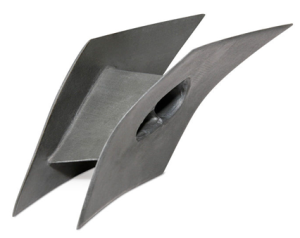Ceramic Matrix Composites: Background
We are often asked “What do you mean by fully coupled multiphysics simulations?” By way of answering this question we are providing a series of Blog articles that will explain the background to a fully coupled multiphysics simulation using a direct example on simulating the processing of ceramic matrix composites (CMC), advanced materials for use in next generation aero-engine applications. To provide some context here is some background about CMCs and the problems faced in their manufacture.
Conventional materials such as nickel based superalloys, titanium, aluminum, and steel are being used within 50 degrees of their melting point during engine operation, to increase power density they need to be replaced by materials capable of operating at temperatures approaching 2000F. Ceramics and CMCs can withstand these temperatures and use in hot engine parts will:
- improve thrust and fuel efficiency while reducing emissions
- reduce cooling requirements
- simplify component design, and
- reduce weight of the supporting structure
The relatively low fracture resistance of ceramics relative to metals, however, restricts their extensive use as structural elements in turbines. To address this challenge, significant research has focused on the development of CMCs that contain a mixture of a ceramic matrix and ceramic fibers to increase structural durability without compromising high temperature capabilities. Currently, CMCs have been considered in applications that support moderate loads e.g., nozzles, combustion liners, airfoils and exhaust components but are planned for operation in more critical components such as turbine blades. For these applications, the development and manufacturing costs of high integrity CMCs must be reduced significantly to provide a cost effective option.
Currently two methods are available to manufacture silicon carbide based CMCs:
- Reactive Melt Infiltration (RMI)
- Chemical Vapor Infusion (CVI)
Reactive melt infiltration (RMI) provides relatively rapid production of near-net shape parts. Chemical vapor infusion (CVI), has many similarities to RMI however, the difficulties in controlling CVI typically generate higher scrap rates than RMI. In addition, CVI typically requires significantly longer manufacturing times than RMI (days as opposed to hours).
In RMI a pre-form of the final desired shape is first manufactured from a porous media. Liquid infiltrates the pre-form through capillary action and simultaneously a chemical reaction occurs between the liquid and pre-form. These reactions often occur within minutes of the liquid contacting the pre-form and the final product takes the shape of the initial pre-form with full density and, ideally, no porosity. Due to the complexity of the manufacturing procedures for CMCs, limited guidelines exist that can readily transfer between different components, shapes and materials. Consequently designers are reliant on expensive and time consuming experimental approaches to develop detailed manufacturing procedures; the impact of these approaches can be significantly reduced by using predictive physics based modeling tools. However, accurate simulation of the RMI process represents a significant challenge: the range of physical phenomena in an analysis is large and not generally available in many commercial simulation tools. An accurate analysis of the RMI process must include the following:
- Unsaturated flow of fluid into a ceramic matrix
- Capillary fluid flow
- Chemical reaction between the fluid and the ceramic matrix
- Volumetric changes associated with the fluid-solid reaction
- Temperature changes associated with the fluid-solid reaction
- Residual stress development
- Distortion of components
Practical difficulties arise in simulating the RMI process due to the complex interactions and interdependencies between the multiple physical phenomena. For example, fluid flow, material deformation and many of the physical constants are temperature dependent, and the liquid to solid transition and solid state phase changes release latent heat. Thus, any simulation must be capable of analyzing these phenomena simultaneously – a fully coupled multiphysics simulation. To do this successfully one must have expertise in the individual physics but also the implementation of them in any computational analysis. Future blogs will discuss how to analyze these phenomena and integrate them into a single analytical framework.

